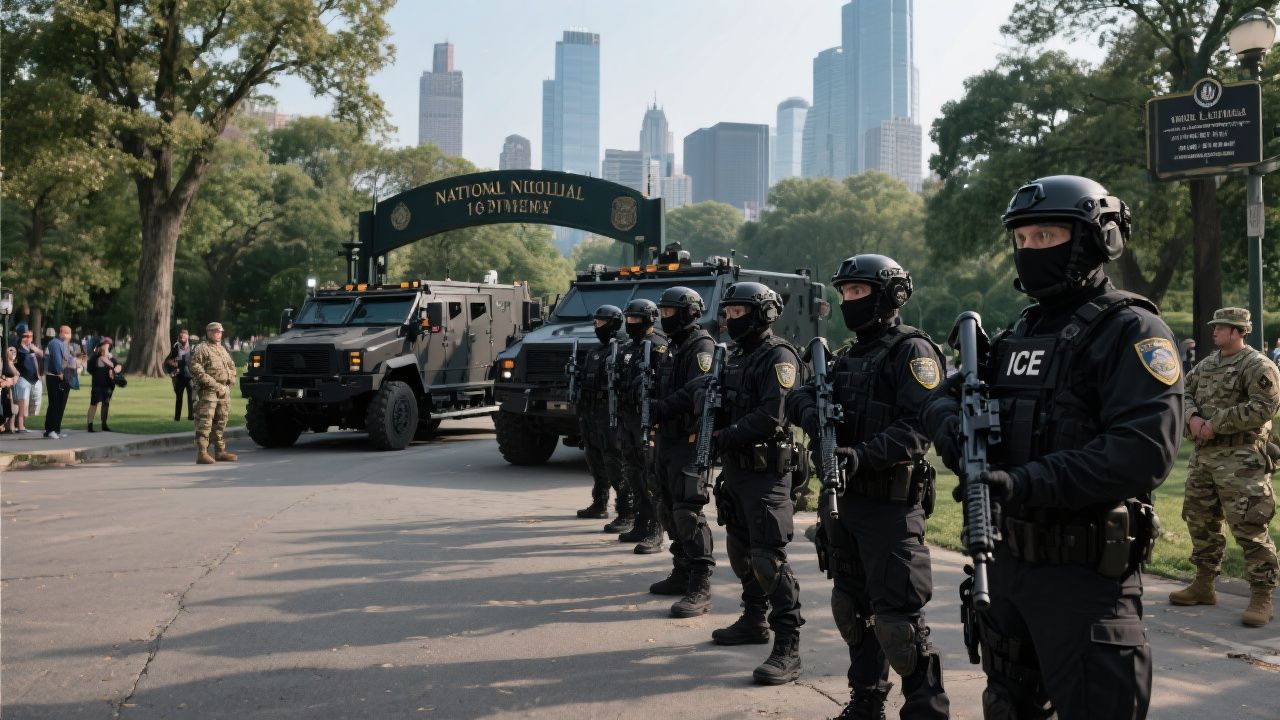
If you’ve been watching the news, you’ve probably seen the images: armored vehicles rolling through Los Angeles, masked officers in tactical gear, and city officials powerless to intervene.
A New Era of Policing in America
This isn’t a scene from a dystopian film. It’s the new face of U.S. law enforcement, as Immigration and Customs Enforcement (ICE) is poised to become the largest, best-funded police force in American history. The transformation, fueled by a staggering$178 billion federal investment, is not just a bureaucratic reshuffling. It’s a seismic shift in the country’s relationship with policing, immigration, and civil liberties.
The Money Flood: How ICE Got So Big, So Fast
The numbers are almost surreal. The Trump administration’s latest budget, passed with a razor-thin margin in Congress, allocates more than$170 billion in new funding for immigration enforcement and detention. That’s more than the combined budgets of the FBI, DEA, ATF, U.S. Marshals, and the Bureau of Prisons. ICE alone will receive$75 billion through 2029, enough to hire 10,000 new agents and build detention facilities for over 100,000 additional people. The agency’s footprint is set to dwarf every other federal law enforcement body, both in size and in reach.
Aaron Reichlin-Melnick, a senior fellow at the American Immigration Council, put it bluntly: “It makes ICE a higher-funded law enforcement agency than the entire FBI, ATF, DEA, US Marshals Service and Bureau of Prisons combined.” The scale is unprecedented, and the intent is clear. Immigration enforcement is no longer a niche operation. It’s the new normal.
On the Ground: What This Looks Like in American Cities
The impact is already visible. In Los Angeles, ICE agents, backed by National Guard troops and Border Patrol, have staged high-profile operations in public parks, rolling through neighborhoods in military vehicles. Mayor Karen Bass, visibly frustrated, told reporters, “They need to leave and they need to leave right now.” But federal officials, emboldened by their new mandate, are unmoved. “Better get used to us now, because this is going to be normal very soon,” said El Centro Border Patrol Sector Chief Gregory Bovino.
For many Americans, this is their first direct encounter with federal immigration enforcement. David Bier, director of immigration studies at the Cato Institute, predicts a future where U.S. citizens are being interrogated on the streets about their citizenship, ICE agents in apartment buildings knocking down doors, and National Guard troops blocking traffic. The spectacle is intentional, a show of force designed to deter undocumented immigrants and, perhaps, to send a message to the broader public.
Who Gets Targeted? The Changing Face of ICE Enforcement
The profile of those detained by ICE is shifting. Where once the agency focused primarily on individuals with criminal convictions, now a third of detainees may have only civil immigration violations. The number of arrests has spiked, with more than 34,000 in June alone, and most are happening far from the border, deep inside American cities.
This expansion isn’t just about numbers. It’s about philosophy. The Trump administration has moved to revoke legal status for millions of migrants, including those with Temporary Protected Status from countries like Cuba, Venezuela, Haiti, and Nicaragua. There’s even talk of “denaturalizing” citizens, stripping citizenship from those who immigrated legally. The message is unmistakable: no one is off-limits.
The Human Cost: Fear, Mistakes, and the Erosion of Trust
History offers a cautionary tale. After 9/11, a rapid hiring surge at Customs and Border Protection led to a wave of corruption and misconduct. As journalist Garrett Graff notes, “What happens when a law enforcement agency at any level grows too rapidly is well-documented. Hiring standards fall, training is cut short, and supervisors are too green to enforce policies and procedures well.” The result? A steady drumbeat of scandals, abuses, and shattered lives.
Already, communities are feeling the chill. In Los Angeles, public transit ridership has dropped by 15 percent, as immigrants and their families avoid public spaces out of fear. Civic participation is down. Parents keep children home from school. The ripple effects are everywhere, and the trust between law enforcement and the communities they serve is eroding fast.
The New American Police State? Or a Passing Storm?
It’s tempting to see this as a temporary overreach, a political fever that will break with the next election. But the infrastructure being built, detention camps, armored vehicles, a vast new bureaucracy, will be hard to dismantle. As one observer put it, if you build it, they will use it. The question is not just what ICE will do with its newfound power, but what future administrations might do with the tools now being assembled.
There’s a lesson here, one that echoes through American history: when fear and politics combine, the machinery of the state can grow in ways that are hard to reverse. The debate over immigration has become a debate over the very nature of American policing, and the outcome will shape the country for years to come.
Closing Thoughts: What Happens Next?
The rise of ICE as America’s largest police force is more than a policy shift. It’s a transformation of the American landscape, one that will touch every city, every neighborhood, and every family, immigrant or not. Whether this is a new chapter in public safety or a dangerous slide toward authoritarianism depends on what happens next, and on how Americans choose to respond.
